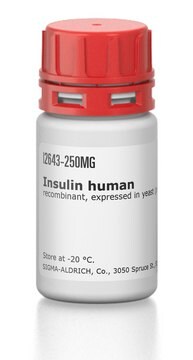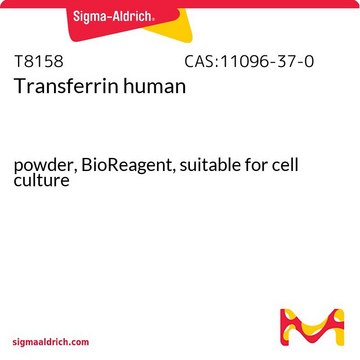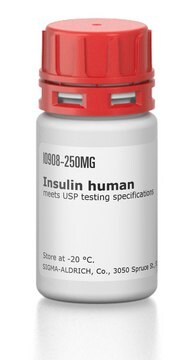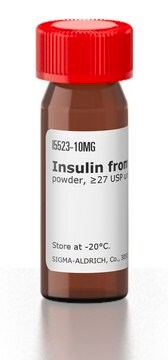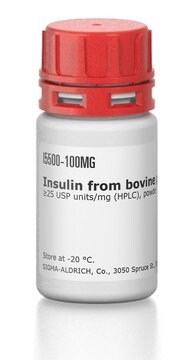I3536
Insulina human
recombinant, expressed in yeast, γ-irradiated, suitable for cell culture
Sinónimos:
Insulin human
About This Item
Productos recomendados
recombinant
expressed in yeast
Quality Level
sterility
γ-irradiated
form
lyophilized powder
potency
≥25 USP units per mg
technique(s)
cell culture | mammalian: suitable
solubility
0.01 M HCl: 20 mg/mL, clear, colorless to faintly yellow
UniProt accession no.
shipped in
ambient
storage temp.
−20°C
InChI key
PBGKTOXHQIOBKM-FHFVDXKLSA-N
Gene Information
human ... INS(3630)
¿Está buscando productos similares? Visita Guía de comparación de productos
General description
Application
- For adipogenic differentiation assays (in the preparation of medium supplement)
- Incubation of cells for the evaluation of the effects of insulin
- Mass spectrometry (used for the external caliberation)
Biochem/physiol Actions
Other Notes
Storage Class
13 - Non Combustible Solids
wgk_germany
WGK 2
flash_point_c
Not applicable
Certificados de análisis (COA)
Busque Certificados de análisis (COA) introduciendo el número de lote del producto. Los números de lote se encuentran en la etiqueta del producto después de las palabras «Lot» o «Batch»
¿Ya tiene este producto?
Encuentre la documentación para los productos que ha comprado recientemente en la Biblioteca de documentos.
Los clientes también vieron
Nuestro equipo de científicos tiene experiencia en todas las áreas de investigación: Ciencias de la vida, Ciencia de los materiales, Síntesis química, Cromatografía, Analítica y muchas otras.
Póngase en contacto con el Servicio técnico
